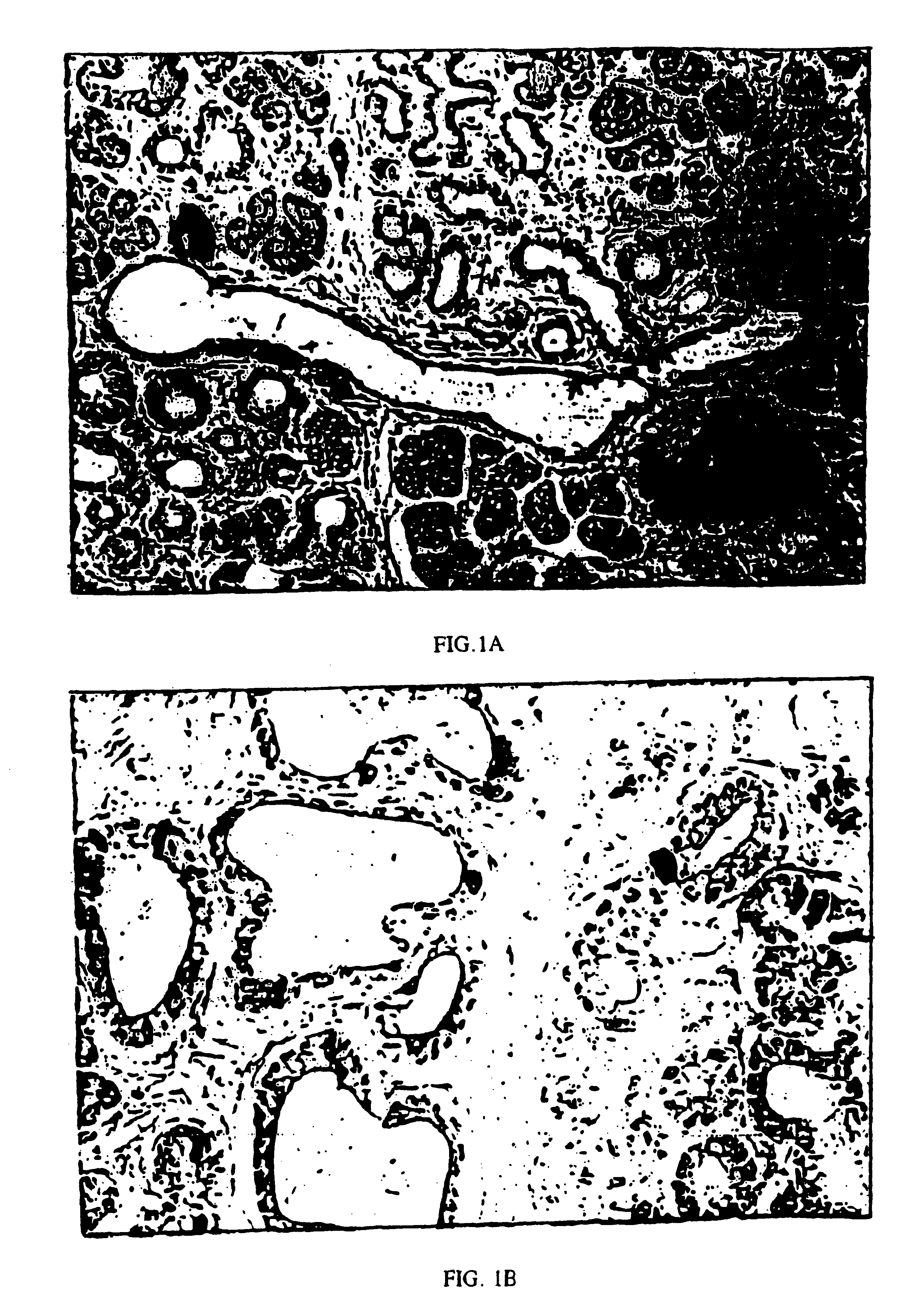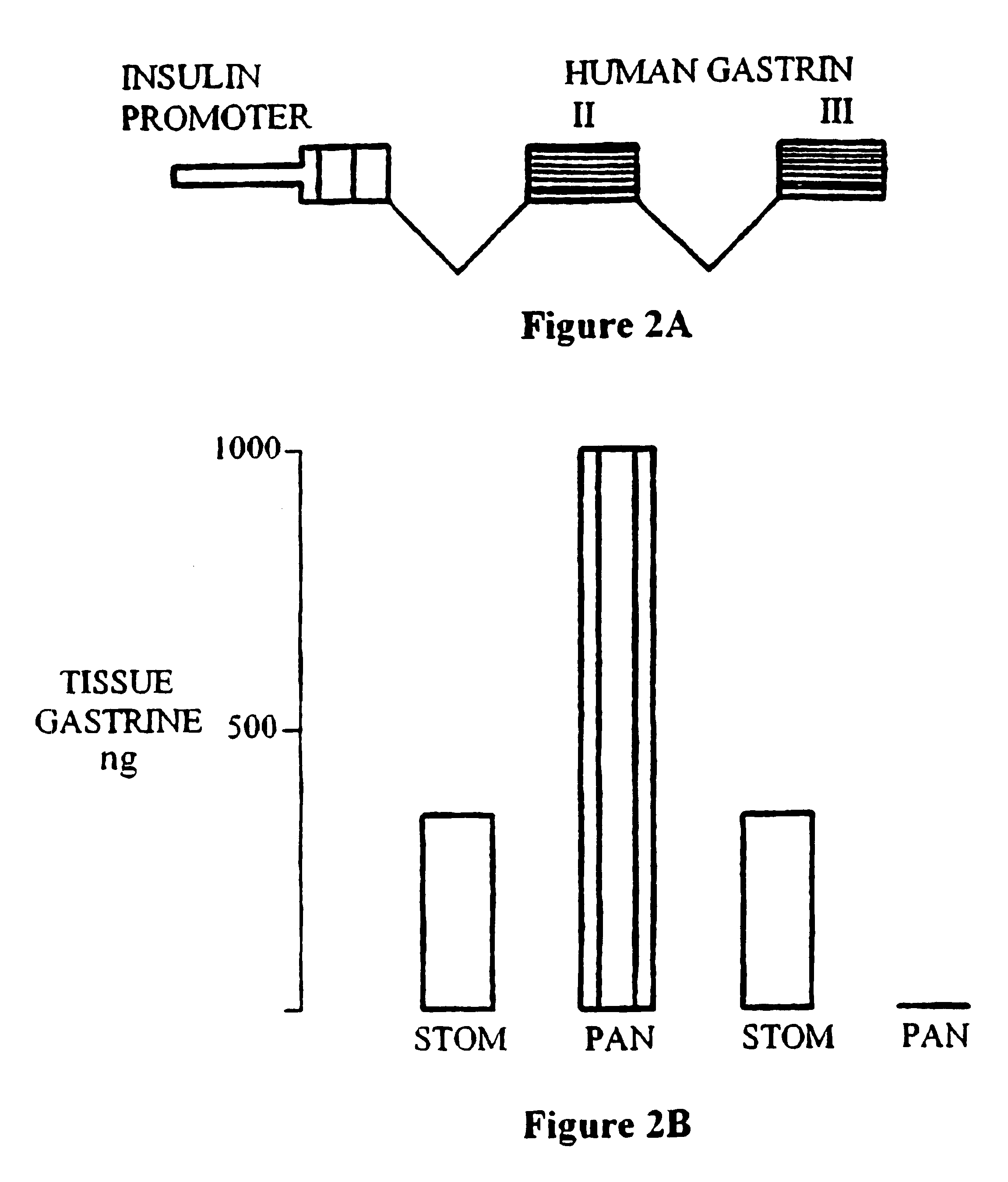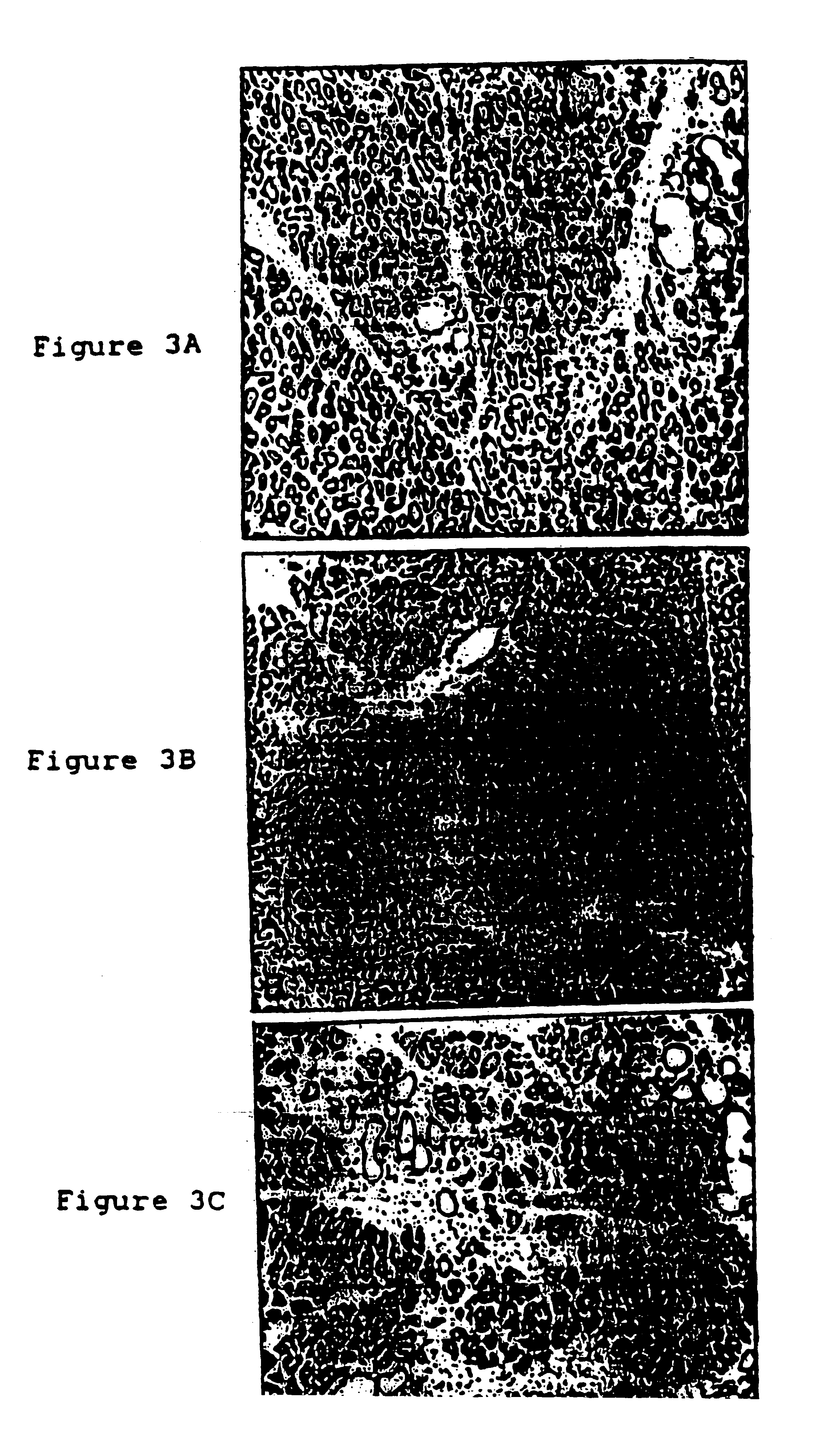Treatment for diabetes
a diabetes and treatment technology, applied in the field of diabetes treatment, can solve the problems of insufficient control of hyperglycemia, inability to prevent or decrease the progression of diabetic complications, clinical efficacy, etc., and achieve the effect of improving the course of diabetes, reducing the risk of diabetes complications, and improving the effect of treatmen
- Summary
- Abstract
- Description
- Claims
- Application Information
AI Technical Summary
Benefits of technology
Problems solved by technology
Method used
Image
Examples
example 1
Assay for Insulin Production in TGF Transgenic Pancreas
Immunoperoxidase staining showed numerous insulin staining cells in the metaplastic ducts from the TGF-.alpha. transgenic pancreas (FIG. 1A), whereas insulin staining cells were virtually absent from the non-transgenic ducts (less than 6.1%). When at least 600 ductular cells / animal were scored at a final magnification of 400.times., insulin positive cells were seen at a frequency of 6.0+ / -0.9% (n=5) in the metaplastic ductules of TGF-.alpha. transgenic mice. Occasional ductular cells stained with the same intensity of insulin staining as the adjacent islets, but most had less intense staining (FIG. 1B). The low level of insulin staining of the ductular cells resembles that of protodifferentiated cells reported in the ducts of the developing pancreas. Pictet, R. and W. J. Rutter, Development of the embryonic endocrine pancreas, in Endocrinology, Handbook of Physiology, ed. R. O. Greep and E. B. Astwood (1972) American Physiologic...
example 2
Pancreatic Gastrin Expression from the INSGAS Transgene
To examine the possible role of gastrin in regulating islet differentiation, transgenic mice were created that express a chimeric insulin promoter-gastrin (INSGAS) transgene in which the insulin promoter directs pancreas specific expression of the gastrin transgene (FIG. 2A). Unlike the gastrin gene, insulin gene expression is not switched off after birth. Thus, the INSGAS transgene results in a persistence of gastrin expression in the adult pancreas.
The INSGAS transgene comprised 370 bp of 5' flanking DNA and the first non-coding exon of the rat insulin I gene. Cordell, B., et al, Cell 18:533-543 (1979). It was ligated to a BamH1-EcoR1 fragment containing 1.5 kb intron 1 and exons 2 and 3 of the human gastrin gene which encodes the preprogastin peptide precursor. Wiborg, O., et al, Proc. Natl. Acad. Sci. USA, 81:1067-1069 (1984); and Ito et al Proc. Natl. Acad. Sci. USA, 81:4662-4666 (1984). A 4.8 kb INSGAS fragment was isolate...
example 3
Histological Examination of TGF-.alpha. and TGF-.alpha. / INSGAS Pancreas
Stimulation of islet growth by gastrin may require stimulation by other growth factors to create a responsive population of cells. Therefore, effects of gastrin stimulation were studied in TGF-.alpha. transgenic mice which have metaplastic ducts that contain insulin expressing cells resembling protodifferentiated islet-precursors. To assess the interaction between gastrin and TGF-.alpha., three groups of mice were bred with equivalent FVB / CD1 strain genetic backgrounds: non-transgenic control, TGF-.alpha. single transgenic and INSGAS / TGF-.alpha. double transgenics. All three groups of mice were placed on 50 mM ZnCl.sub.2 at 3 weeks of age. At 17 weeks of age, the animals were sacrificed and the pancreas removed for histological evaluation. The pancreas from TGF-.alpha. and INSGAS / TGF-.alpha. mice had similar gross morphological appearances: resilient, firm and compact in contrast to the soft diffuse control pancr...
PUM
| Property | Measurement | Unit |
|---|---|---|
| body weight | aaaaa | aaaaa |
| body weight | aaaaa | aaaaa |
| body weight | aaaaa | aaaaa |
Abstract
Description
Claims
Application Information
 Login to View More
Login to View More - R&D
- Intellectual Property
- Life Sciences
- Materials
- Tech Scout
- Unparalleled Data Quality
- Higher Quality Content
- 60% Fewer Hallucinations
Browse by: Latest US Patents, China's latest patents, Technical Efficacy Thesaurus, Application Domain, Technology Topic, Popular Technical Reports.
© 2025 PatSnap. All rights reserved.Legal|Privacy policy|Modern Slavery Act Transparency Statement|Sitemap|About US| Contact US: help@patsnap.com



